Joomla 5.0.3 と 4.4.3 がリリースされました
- 詳細
Joomla 5.0.3 と 4.4.3 がリリースされました。セキュリティとバグ修正のリリースです。
本家リリース記事:Joomla 5.0.3 and 4.4.3 Security and Bug Fix Release
コアパッケージのダウンロード(joomla.org)
すべてのJoomla!のバージョン向け情報 / 技術的な要件
コアパッケージのアップグレード(joomla.org)
サイトと管理画面の日本語パック
各国言語ファイルのリリース状況(一定時刻に自動更新)
翻訳に関するご意見・要望
Joomla 5.0.2 と 4.4.2 がリリースされました
- 詳細
Joomla 5.0.2 と 4.4.2 がリリースされました。バグ修正のリリースです。
本家リリース記事:Joomla 5.0.2 and 4.4.2 Bug Fix Release
コアパッケージのダウンロード(joomla.org)
すべてのJoomla!のバージョン向け情報 / 技術的な要件
コアパッケージのアップグレード(joomla.org)
サイトと管理画面の日本語パック
各国言語ファイルのリリース状況(一定時刻に自動更新)
翻訳に関するご意見・要望
Joomla 5.0.1 と 4.4.1 がリリースされました
- 詳細
Joomla 5.0.1 と 4.4.1 がリリースされました。セキュリティとバグ修正のリリースです。
本家リリース記事:Joomla 5.0.1 and 4.4.1 Security and Bug Fix Release
コアパッケージのダウンロード(joomla.org)
すべてのJoomla!のバージョン向け情報 / 技術的な要件
コアパッケージのアップグレード(joomla.org)
サイトと管理画面の日本語パック
各国言語ファイルのリリース状況(一定時刻に自動更新)
翻訳に関するご意見・要望

